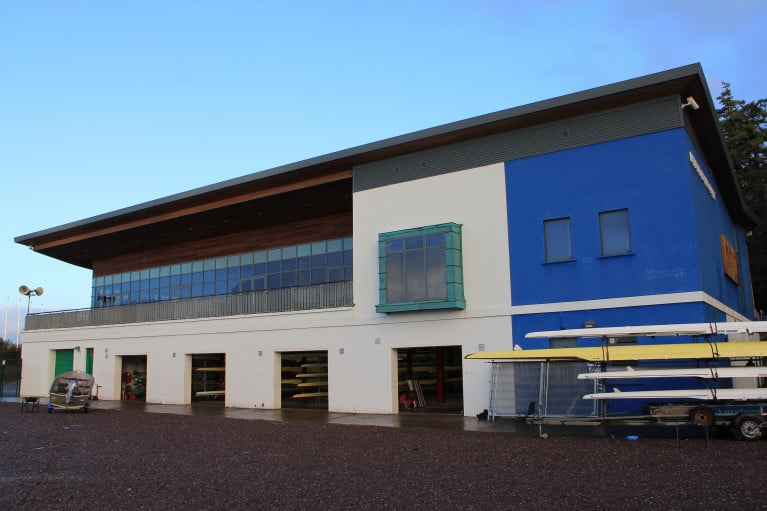Displaying items by tag: Rower of the Month,
In the light of the absence of all the domestic events in the month and the severe curtailment of the Ireland trials, the judges have decided not to choose an Afloat Rower of the Month for February 2020.
The pincer movement of very bad weather at home, which forced organisers to abandon heads of the river, and the encroaching threat of the Covid-19 virus has left rowing with very little competition.
A limited trial for lightweights and for sweep women went ahead, but no official details were released.
Rower of the Month awards: The judging panel is made up of Liam Gorman, rowing correspondent of The Irish Times and David O'Brien, Editor of Afloat magazine. Monthly awards for achievements during the year will appear on afloat.ie. Keep a monthly eye on progress and watch our 2020 champions list grow.
Puspure's Trial Form Set Stage for Silver Achievement
#Rower of the Month: Sanita Puspure is the Afloat Rower of the Month for May. The Old Collegians sculler had struggled with injury early in the year, but come the Ireland trial at the National Rowing Centre, she was one of the top performers. She would carry that form into the first World Cup Regatta in Belgrade, where she took silver behind world champion Jeannine Gmelin of Switzerland and ahead of world bronze medallist Magdalena Lobnig of Austria and Britain’s Victoria Thornley, the silver medallist at last year’s World Championships.
May was also an excellent month for Irish juniors. Castleconnell were honoured as the best junior club at the Ghent International Regatta. Enniskillen, Workmen’s, Bann and Fermoy also shone at the British National Schools Regatta on Dorney Lake. Fermoy’s Gill McGirr and Eliza O’Reilly won gold in the Championship Pair.
Rower of the Month awards: The judging panel is made up of Liam Gorman, rowing correspondent of The Irish Times and David O'Brien, Editor of Afloat magazine. Monthly awards for achievements during the year will appear on afloat.ie. Keep a monthly eye on progress and watch our 2018 champions list grow.
#ROWING: The Afloat Rowers of the Month for July are the Grainne Mhaol/NUIG crew which won the senior eights final at the Irish Championships. This was the third win of the last four years for a senior eight involving NUIG. The victory over Queen’s came by virtue of a stunning finish, a characteristic of NUIG crews in recent years. The achievement was all the more poignant as it was dedicated to long-time coach Tom Tuohy, who died last year after a short illness.
Rower of the Month awards: The judging panel is made up of Liam Gorman, rowing correspondent of The Irish Times and David O'Brien, Editor of Afloat magazine. Monthly awards for achievements during the year will appear on afloat.ie and the overall national award will be presented to the person or crew who, in the judges' opinion, achieved the most notable results in, or made the most significant contribution to rowing during 2012. Keep a monthly eye on progress and watch our 2012 champions list grow.
Keohane is Afloat Rower of the Month for June
# ROWER OF THE MONTH: John Keohane is the Afloat Rower of the Month for June. The Corkman won Division One of the men’s single sculls at Cork Regatta, his second such win in the eFlow League series. He had also won at Skibbereen Regatta. Keohane competed in the Diamond Sculls at Henley, but he was beaten by Luke Moon in difficult conditions for the lighter Irishman.
Rower of the Month awards: The judging panel is made up of Liam Gorman, rowing correspondent of The Irish Times and David O'Brien, Editor of Afloat magazine. Monthly awards for achievements during the year will appear on afloat.ie and the overall national award will be presented to the person or crew who, in the judges' opinion, achieved the most notable results in, or made the most significant contribution to rowing during 2012. Keep a monthly eye on progress and watch our 2012 champions list grow.
# ROWING: Sanita Puspure is the Afloat Rower of the Month for May. The 30-year-old gave Ireland a place in the rowing programme at the Olympic Games in London with a characteristically gutsy performance which placed her fourth in the single scull at the Olympic Qualifier in Lucerne. This was the final Olympic place on offer, and she won a battle in the closing stages with Iva Obradovic of Serbia to clinch the spot. She is the deserving and popular winner of the Afloat Rower of the MonthRower of the Month awards:
The judging panel is made up of Liam Gorman, rowing correspondent of The Irish Times and David O'Brien, Editor of Afloat magazine. Monthly awards for achievements during the year will appear on afloat.ie and the overall national award will be presented to the person or crew who, in the judges' opinion, achieved the most notable results in, or made the most significant contribution to rowing during 2012. Keep a monthly eye on progress and watch our 2012 champions list grow.
Maher is Afloat Rower of the Month for March
ROWING: Michael Maher is the Afloat Rower of the Month for March. The Dubliner won the Open Lightweight category at the British Indoor Championships in Nottingham. In 2010 he was part of the Ireland lightweight quadruple scull which took silver at the World Under-23 Championships. Last year he and the lightweight quadruple finished fourth at the senior World Championships.
Rower of the Month awards: The judging panel is made up of Liam Gorman, rowing correspondent of The Irish Times, President of Rowing Ireland Anthony Dooley and David O'Brien, Editor of Afloat magazine.


































































